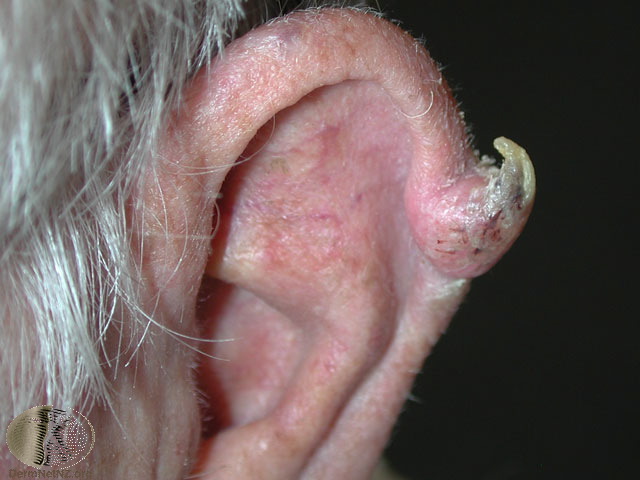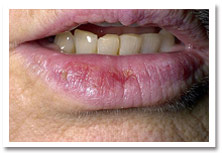
Actinic Keratoses (AKs) are very common. They are one of the most common reasons for office visits. They are sometimes called solar keratoses because they are caused by years of sun exposure.
AKs are considered precancerous. If they are left untreated there is a high likelihood of progression to squamous cell carcinomas
What Do AKs Look Like?
Most are dry, scaly and rough textured. Some are skin colored and more difficult to see. They are usually sandpaper like and are in groups that cover large areas of skin. Some can appear as red bumps, thick red scaly patches or growths or crusted growths varying in color from red to brown to yellowish black.
Sometimes AKs grow rapidly upward from the skin and develop a growth that resembles a horn. When this happens, the AK is called a cutaneous horn. Horns vary in size and shape. They are common on men’s ears. They are typically considered cancerous as the base of the horn has a higher likelihood of cancer.

Treatment of AKs is important to prevent development into skin cancer.
Risk Factors For AKs
- Blond or red hair color
- Blue, green or hazel eyes
- Skin that freckles or burns when in the sun
- 40 years of age and older
- Fair skin people
- People who have had a lot of sun exposure
- Using a tanning bed or sun lamp
Where Do AKs Form On The Body
AKs typically form in areas that receive the most sun.
- Face, forehead and scalp, especially a bald scalp
- Ears
- Neck and upper chest
- Back
- Arms and hands
- Lower legs, especially in women
- Border of the lip – actinic chelitis
Actinic Chelitis:

Treatment Options
- Cryosurgery: This is the most common treatment. This involves freezing the AK with liquid nitrogen, which will make the skin blister and flake off.
- Chemical Peeling: A chemical solution is applied to the sun to peel away the AK.
- Chemotherapy for the skin: A prescription called 4-fluorouracil can be written. This is a cancer fighting cream that you apply to the AK to destroy it.
- Immunotherapy for the skin: A prescription cream called imiquimod cream – works with the body’s immune system to help destroy AKs.
- NSAIDs for the skin: Sodium diclofenac gel is a medication that destroys AKs.